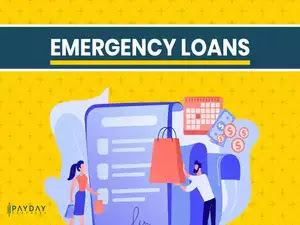
Emergency loans in the USA serve as financial lifelines for individuals facing unforeseen and urgent financial challenges. These loans provide quick access to funds, helping borrowers cover unexpected expenses such as medical bills, car repairs, or other critical needs. Understanding the key features, types, and considerations associated with emergency loans is essential for those navigating through challenging financial situations.
Key Features of Emergency Loans:
1. Quick Access to Funds: The primary characteristic of emergency loans is their swift approval and disbursement process. Borrowers often receive funds within a short period, sometimes as soon as the next business day.
2. Unsecured Nature: Many emergency loans are unsecured, meaning they do not require collateral. This allows borrowers to access funds without risking valuable assets.
3. Short-Term Repayment: Emergency loans typically have short repayment terms. Borrowers are expected to repay the loan within a few weeks to a few months, depending on the lender and the loan amount.
4. Online Application: The application process for emergency loans is often streamlined and can be completed online. This digital approach enhances accessibility and expedites the loan approval process.
5. Varied Loan Amounts: Emergency loans come in different sizes, allowing borrowers to access the amount they need to address their specific financial emergency. Loan amounts can range from a few hundred to several thousand dollars.
Types of Emergency Loans:
- Payday Loans: Payday loans are short-term loans that provide quick cash to borrowers with the expectation that the loan will be repaid on their next payday. While they offer rapid access to funds, payday loans often come with high interest rates.
- Personal Loans: Unsecured personal loans can serve as emergency loans, providing borrowers with a lump sum that can be used for various purposes. Personal loans typically have fixed interest rates and predictable repayment schedules.
- Title Loans: Title loans are secured loans that use the borrower’s vehicle as collateral. While these loans can provide higher loan amounts, they come with the risk of losing the vehicle if the borrower fails to repay the loan.
- Cash Advances: Some credit cards offer cash advance options, allowing cardholders to withdraw cash up to a certain limit. Cash advances often come with high fees and interest rates.
- Installment Loans: While typically not considered traditional emergency loans, installment loans with short repayment terms can be used to address urgent financial needs. These loans provide a fixed amount with a set repayment schedule.
Applying for Emergency Loans:
1.Assess the Situation: Before applying for an emergency loan, assess the urgency and necessity of the financial need. Consider alternative options, such as savings or assistance from family and friends.
2. Research Lenders: Compare emergency loan offerings from various lenders. Pay attention to interest rates, fees, and the reputation of the lender. Online lenders, credit unions, and traditional banks are common sources of emergency loans.
3. Check Eligibility: Review the eligibility criteria of potential lenders to ensure that you meet their requirements. Criteria may include income, credit score, and employment status.
4. Prepare Documentation: Gather necessary documentation, including proof of income, identification, and other information required by the lender.
5. Submit Application: Complete the online or in-person application form. Be accurate and truthful in providing information to enhance the likelihood of loan approval.
6. Review Loan Terms: Once approved, carefully review the loan terms, including the interest rate, fees, and repayment schedule. Ensure that you fully understand the financial commitment.
7. Receive Funds: Upon agreement to the loan terms, the funds will be disbursed. In many cases, borrowers receive the funds quickly, often within one business day.
Considerations for Borrowers:
- Cost of the Loan: Emergency loans, especially payday loans, can come with high fees and interest rates. It’s crucial to understand the total cost of the loan and how it fits into your budget.
- Alternatives: Before committing to an emergency loan, explore alternative options such as negotiating with creditors, seeking assistance from charitable organizations, or utilizing available savings.
- Credit Impact: While some emergency loans may not require a traditional credit check, others may impact your credit score. Understand the lender’s policy and the potential consequences for your credit.
- Repayment Plan: Ensure that you have a clear plan for repaying the loan. Late payments or defaulting on the loan can lead to additional fees and negatively impact your credit.
- Avoiding a Cycle of Debt: High interest rates associated with some emergency loans can lead to a cycle of debt. Borrowers should be cautious and explore options that allow for manageable repayment.
Conclusion:
Emergency loans in the USA play a crucial role in helping individuals navigate through unexpected and challenging financial situations. While they offer quick access to funds, borrowers should approach emergency loans with careful consideration, fully understanding the terms, costs, and implications. Exploring alternative solutions and developing a comprehensive financial plan are integral components of making informed decisions during times of financial urgency. As with any financial product, responsible borrowing and a thorough understanding of the terms contribute to a positive experience with emergency loans in the USA

Leave a Reply